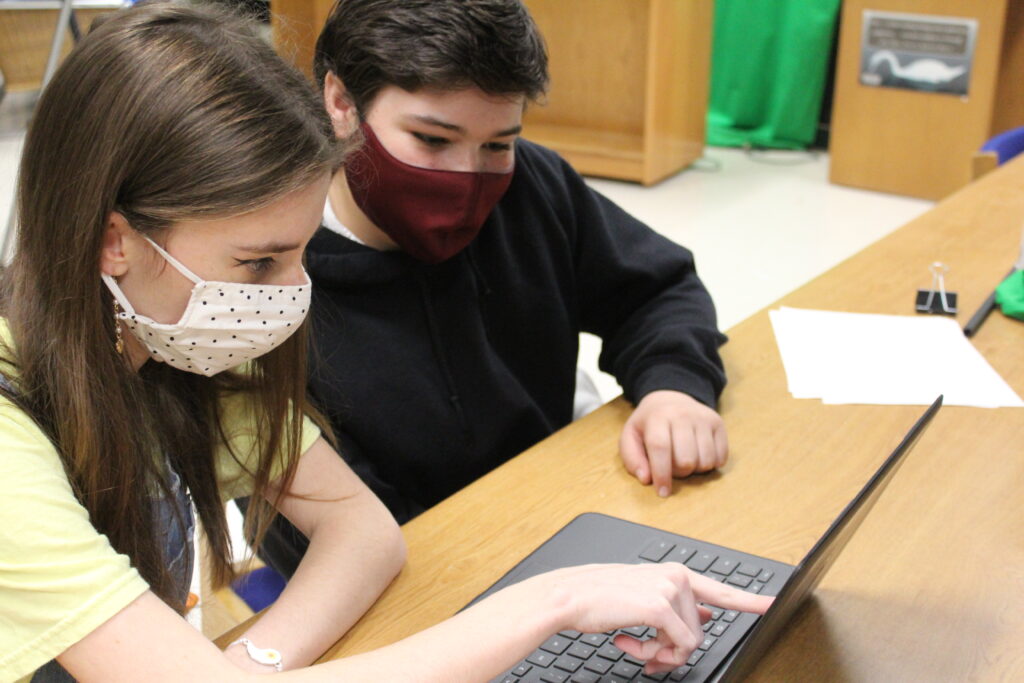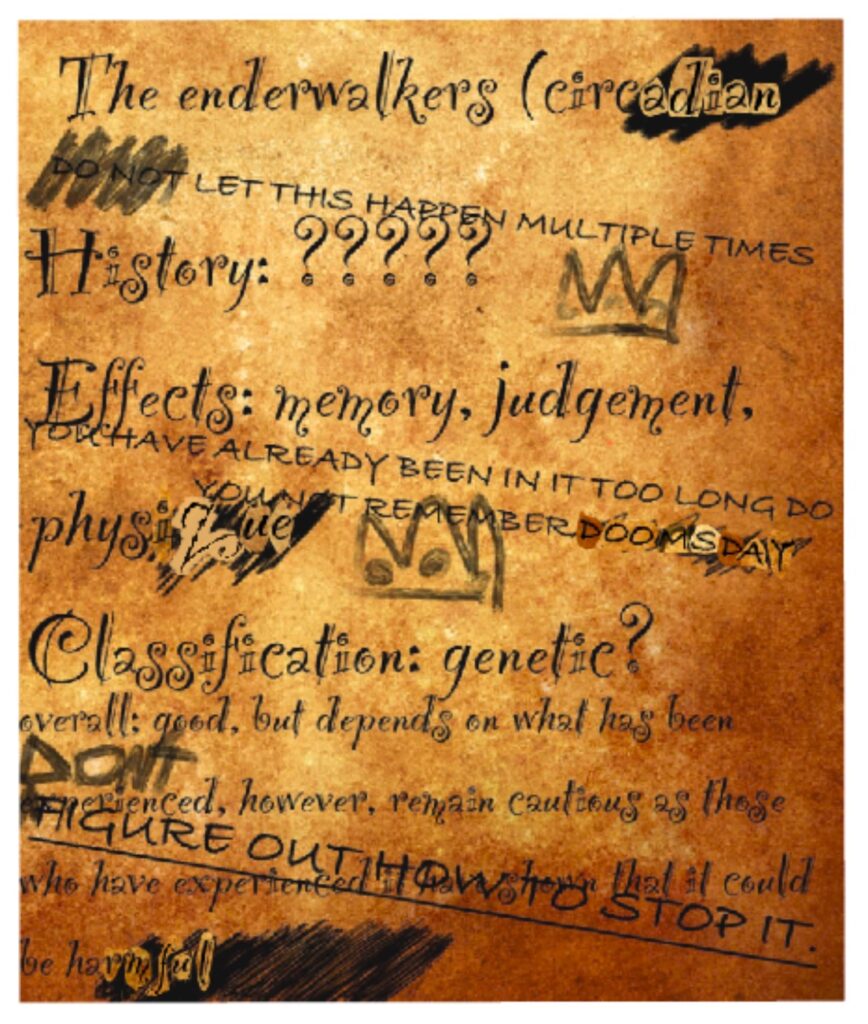Alternate reality games bring escape room experience to real life
Meghan Dincler | Online Editor

Ominous codes and encrypted files are the stuff of thriller novels. But these mysterious items are being brought to the real world through Alternate Reality Games.
The popularity of Alternate Reality Games (ARGs) is on the rise on social platforms such as Reddit and present a way for people to solve a mystery with nothing more than their brains and a computer. ARGs are a form of entertainment for many that utilize the real world as their game board, guiding the players to unravel a mystery or story through a series of clues and puzzles.
One of the more mainstream ARGs was organized by the Duffer Brothers, the directors of Stranger Things, in order to promote the show’s third season. The game is most commonly referred to as “Operation Scoop Snoop,” given that was the name of the covert mission players were asked to go on after starting the game.
The game began with a message left in morse-code in a Baskin Robbins commercial and took off from there as players decoded passwords using a cipher found in various Baskin Robbin shops around the world, followed a mysterious contact through online forums in the hunt for secret portals — most likely leading to “The Upside Down”, the alternate dimension that plays a significant role in the Netflix show — and eventually, “saved the world.”
While every ARG will look different, it is not uncommon to see show and game franchises taking advantage of them as a unique way to promote their product. With Stranger Things being a critically-acclaimed Netflix show, the game drew in a more mainstream audience, leading new players to rely on help from others to decipher clues and get access to the webpages needed to play the game.
For this reason, the largest component of ARGs is arguably the social aspect; the collaborative effort that almost resembles that of an escape room. However, in place of a room, players are expected to work together worldwide through online forums like Discord and Reddit to solve the clues and figure out the conclusion to each game’s story, since most games involve a cast of characters living out their own story in the alternate reality of the game. As a result, ARGs provide an interesting way to meet new people, as junior Olivia Kelsey found out after playing her first game.

“There’s a massive Discord with close to 15,000 members,” Kelsey said. “ARGs are collaborative. It’s a group of people trying to work together to solve this mystery. It’s helpful because I don’t know how to decode certain things but someone else might, so I can say ‘Hey, I think this might be this type of code, could you figure this out for me?’”
While he has not yet gotten into a game, freshman Josh Kyselica is involved in an online chatroom on Discord as well, where he has met multiple people who are also interested in ARGs. He believed that “[he] didn’t think [he’d] be socializing with these people if [he] didn’t know about them” and that “it makes it a lot easier to talk to people online when you have similar interests.”
Both Kyselica and Kelsey have met people through the world of ARGs, with Kelsey having met “a lot of online friends all over the world, [including] an online friend who lives in India.” Kyselica enjoys being able to use ARGs as a common conversation topic while online, and often having conversations about them “while [he’s] playing a game and on voice call. [He] meets people that have similar interests about that stuff [ARGs] and talk with them about that.”
Along with meeting new people, the ARG she is participating in has brought new experiences to Kelsey’s life as well. Her love of Minecraft YouTube, specifically the Dream roleplay survival multiplayer [SMP] world, unlocked these new experiences, being the catalyst for her to begin to play the Alternate Reality Game.
“The one that I’m doing right now is called the Enderwalk ARG,” Kelsey said. “It’s based on some of the lore behind a Minecraft YouTuber whose name is Ranboo, whose character in the server is part Enderman. He goes into a sort of sleepwalking paralysis throughout the Dream SMP, and the goal of the game for us is to figure out why.”
In order to achieve this goal, she has had to puzzle through coded messages which range in difficulty, making some clues difficult to understand — even with the help of others.
“The first clue we got was really just common sense,” Kelsey said. “It was a document with origins, genetics and stuff [related to the game’s storyline] and there were certain words scribbled out or written over. We had to figure out what those words were; for example, we solved that one of the words was ‘circadian,’ telling us the clue related to the sleep cycle. However, one came out today that is quite literally just a square with a zigzag.”
ARGs can originate from many different groups or places. One of the most common resources for finding active games is the website “argn.com,” short for “ARGNet,” a website that keeps an updated list of active games. There are no set guidelines for when a game is considered active, with the only real rule being that “it has to resurge every once in a while” according to Kyselica. He’s observed that “sometimes it [the games going cold] happens and everyone forgets about it, but then it can happen again and people usually remember and come back.”

ARGNet presents a valuable resource for avid Alternate Reality Game fans, but Kelsey found the game she’s participating in through Ranboo’s YouTube channel. Along with the information on YouTube, “there’s a Twitter account who runs the Discord and will send out updates and stuff that we have to uncover and decode.”
Social media is often used as a starting point for ARGs, including one that became a staple in the history of Alternate Reality Games. The game got players involved in real-life conflict and even went as far as doxxing players’ real life identities, meaning that the game’s creators collected and leaked personal information about the players. This is an act that is completely out of line with the set precedents of Alternate Reality Games, turning many people away from the community before it had even really gone mainstream (with the events of the game occurring in 2009). That game is generally referred to as “Junko Junsui”, after the main character of the game, and serves as a cautionary tale of the potential dangers for those getting into ARGs
Even armed with the technical knowledge that many avid ARG players have, games can still be tedious and challenging. Kelsey has only been involved in the Enderwalk ARG for less than a month, but she has already encountered difficulties, and seen many others do the same.
“You get stuck often,” Kelsey said. “There was an ARG that I didn’t participate in, I kind of joined near the end of it so I didn’t really participate but I knew what happened in it, and it started about two years ago and just got solved a few months ago.”
Regardless of the time it takes to complete an ARG, common traits that can be seen in almost anyone who plays a lot of Alternate Reality Games is resilience and persistence. Whether it’s working for years to solve clues, or combing through pages of information to find one pair of coordinates, Kyselica knows that they will never give up.
“You would think that after like, two years, they’d be done with it,” Kyselica said. “But as soon as they find something new, they’re like ‘ok, we did it, we got one step closer.’ They’re thinking about the steps they’ve taken, not how many steps they have left.”
